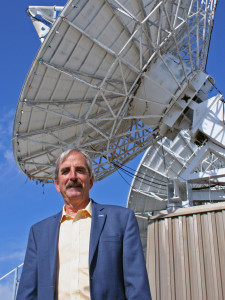Through the Atmosphere: Summer 2014 Director’s Note
In thinking about our recent achievements and where we are headed, it is illuminating to look to the past for events and perspectives that have set the stage and provided strong supporting roots. The experience of SSEC and AOS people in the 1974 GATE experiment (described in “The World According to GATE”) is a great example of a key event from our past that provided a GATEway for many recent advances.
This issue of Through the Atmosphere is marbled with themes from the GATE experience. The collaborative experiment enabled strong connections for defining features of the Earth’s climate, explored the unique role of satellites, and welcomed the invigorating contributions of young scientists.
At the time of GATE, major advances were beginning to be demonstrated using geostationary images from the Visible and Infrared Spin Scan Radiometer (VISSR) imager on SMS-1. Among them were the identification of cloud clusters connected with deep moist convection and Professor Suomi’s dream of accurate wind measurements from cloud tracking that was emerging from demonstrations of the new McIDAS computer system.
These are both important roots for major achievements reported here, including the cover story on the poleward progression of tropical cyclones featured in the journal Nature, our tropical cyclones website that recently turned 20 years old and is used by a wide range of national and international forecasters, and the effort to make our satellite wind record truly global in extent.
Alongside geostationary satellites, SSEC now makes equal use of polar orbiting satellites in its research. One key research product developed to monitor the impacts of volcanic eruptions on aviation safety is now transitioning to operations. It was also the subject of a recent congressional briefing by Mike Pavolonis, a NOAA ASPB scientist stationed at CIMSS.
Another example involves the research of graduate student, Michelle Feltz, using data from the new advanced infrared sounders on the Suomi NPP and MetOp platforms. Her work compares advanced sounder temperature profiles with accurate temperature information from GPS occultation data in a way that leads to a better understanding of their combined uncertainties, thereby providing an important foundation for climate change studies.
Finally, our tradition of seeking new observing techniques like the Boundary Layer Instrumentation System (BLIS) developed by SSEC for GATE continues with the Absolute Radiance Interferometer (ARI), a prototype for the future NASA CLARREO climate benchmarking observatory. We are hopeful that recent programmatic developments will lead to a CLARREO pathfinder mission being flown on the International Space Station in the next few years.
by Hank Revercomb
The current issue of Through the Atmosphere, Summer 2014, may be found here.

